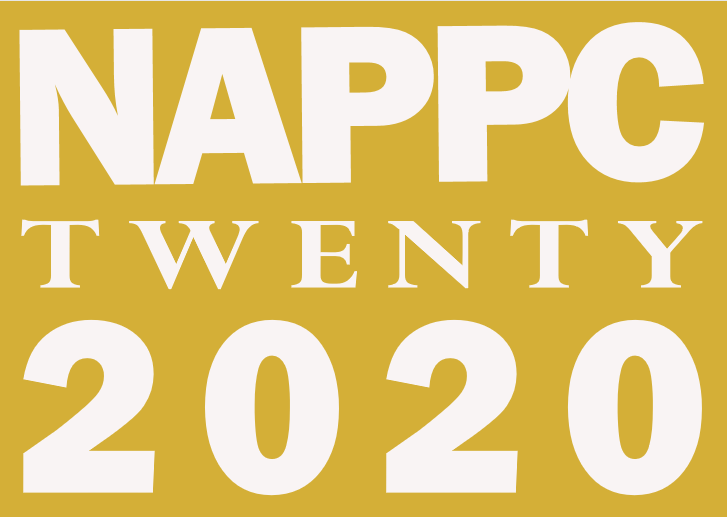NAPPC Conference Recap 2020
This year's 20th Annual North American Pollinator Protection Campaign (NAPPC) Conference, hosted virtually by the Smithsonian National Museum of Natural History, was a huge success with many first-time participants from a diverse collection of fields. Despite the various barriers brought on by the COVID-19 pandemic, the Pollinator Partnership and NAPPC Team pivoted to ensure that critical components of the NAPPC Conference maintained their integrity. This year’s Conference brought partners of all backgrounds together, working to find common ground on innovative initiatives that benefit pollinators.
This event included wonderful, world class presentations from leaders at the forefront of pollinator issues. Topics ranged from plant-pollinator interactions, specialist bee conservation, and the interconnectedness of grassland conservation and pollinators. Speakers included:
Kelly Rourke, Director of Programs and Operations, Pollinator Partnership
Laurie Davies Adams, President and CEO, Pollinator Partnership
Dr. Rebecca Johnson, Associate Director for Science and Chief Scientist, Smithsonian National Museum of Natural History
Dr. David Inouye, University of Maryland/Rocky Mountain Biological Lab:
The Status of Pollinators after 20 Years of NAPPC
Dr. Doug Tallamy, University of Delaware:
Plant-pollinator interactions and how such interactions determine the diversity of animal communities
Sam Droege, US Geological Survey with Jarrod Fowler:
The Conservation of Specialist Bees
Christine Taliga, USDA NRCS:
Grassland Conservation and Pollinators
Additionally, NAPPC convened 10 Task Forces who aim to establish year-long objectives surrounding a certain pollinator issue. Some NAPPC Task Forces are focused on the conservation of specific pollinators, engaging broad stakeholders to promote the monarch butterfly and exploring the role of NAPPC in making positive contributions to bumble bees. Another is developing and disseminating pesticide applicator training and addressing other pressing pesticide issues. The Bee Friendly Farming Task Force is building on an existing project that establishes pollinator-friendly criteria for farmers. The Honey Bee Health Task Force creates an RFP with relevant priority areas for scientific grants and has developed an online diagnostic tool for beekeepers. Three new task forces focus on the impacts and mitigation of climate change in relation to pollinator health; pollinator habitat installations including land preparations and maintenance; and tri-national collaboration aiming to expand and enhance the North American collaborative by engaging more participation from Canada and Mexico. Current grantees gave updates on their honey bee health research on the following topics:
Dr. Kirsten Traynor, Arizona State University:
Smart Tracking: How varroa impact the social cohesion and longevity of a colony
Amy Geffre, University of California San Diego:
The Understudied Honey Bee: Exploring the Role of Feral Honey Bees in Pathogen Dynamics in Pollinator Communities of Southern California
*presented on behalf of Principal Investigator, Dr. James Nieh of the Nieh lab, University of California San Diego
Dr. Mauricio Quesada, Universidad Nacional Autónoma de México:
Effects of landscape and floral resources on population density, honey composition, nutritional stress and prevalence of parasites and pathogens in Apis mellifera in Mexico
Pierre Lau and Alexandria Payne, Texas A&M University:
Can we alter the macronutrient ratios within artificial diets to bolster honey bee pathogen defense?
*presented on behalf of Principal Investigator, Dr. Juliana Rangel of the Texas A&M Department of Entomology
Dr. Meghan Bennett, USDA-ARS:
Using nutrition to combat the biggest threat to honey bee survival, Varroa destructor
The 20th Anniversary Celebration concluded with a virtual toast to everything that has been accomplished in the last 20 years, and to the next 20 years of accomplishments that lie ahead. NAPPC Founders, those there at the very beginning, provided remembrances showcasing how NAPPC came to be. Each participant received and gift package curated by the NAPPC Team, aiming to replicate the luxury of sharing a piece of cake together. While certainly not the same, this package provided NAPPC Partners with a sense of togetherness and appreciation. The 2021 NAPPC is scheduled to return to the Smithsonian National Museum of Natural History for an in-person, or possible hybrid meeting that incorporates both virtual and face to face, meeting to continue NAPPC’s prominent influence on the future of pollinators.
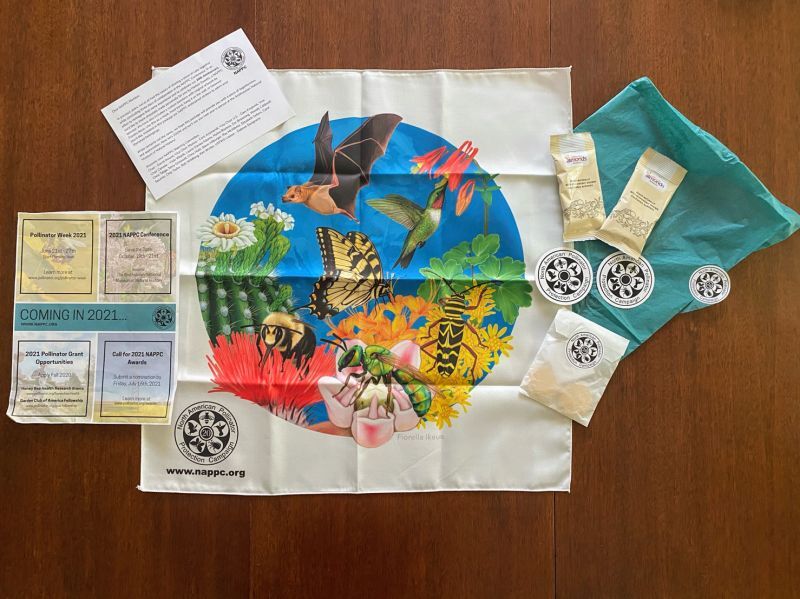
2020 Pollinator Award Winners
NAPPC also presented seven awards to pollinator advocates, farmers and ranchers, and other land managers who have worked for years to promote pollinators. This includes the newly inaugurated Pollinator Electric Power Award, sponsored by the Electric Power Research Institute (EPRI), aiming to recognize electric power companies who are leading the field in pollinator‐friendly projects. These awardees understand just how important pollinators are to food, culture, and life. They have taken that extra step to help out the birds, bees, butterflies, moths, and bats that support agriculture and ecosystems everywhere. NAPPC, through its recognition and appreciation of these individuals, encourages their activities and hopes to catalyze future actions on behalf of pollinators.
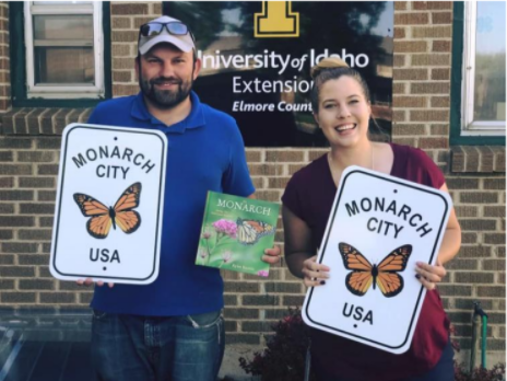
Brad Stokes, University of Idaho
2020 NAPPC POLLINATOR ADVOCATE USA
Brad Stokes of the University of Idaho is the Extension Education and County Chair for Elmore County. As a trained entomologist and environmentalist, Brad has advocated for pollinator protection through education in the areas of insect identification, habitat, reproductive processes, and nectar producing plant lists. Brad is a published author who often provides “Ask an Expert” answers on insect identification questions on the national extension platform. As an Idaho Master Gardener instructor, he certified 15 volunteers in 2019. He is also a key collaborator on the Just Bee-Cause project that provided plant lists and seeds, generating bee kits that are
disseminated throughout southern Idaho to homeowners, government agencies, and agricultural producers. In 2018, Brad developed the Elmore County Bee Survey Project, which has collected over 1,900 bee specimens and documented all Anthophila species in Elmore County. He has also declared Pollinator Awareness Day during National Pollinator Week and co-hosts Arbor Day events, where he and his staff promote pollinator protection, distribute wildflower seed, and participate in other educational activities. In 2020, Brad authored and Mayor Rich Sykes of Mountain Home, MT signed the City of Mountain Home Pollinator Appreciation Week Proclamation.
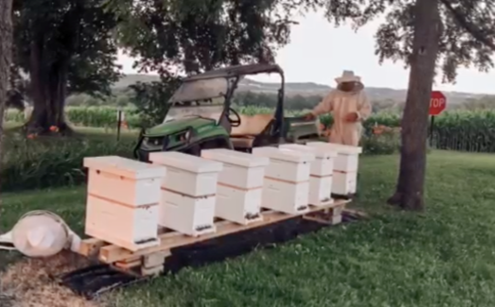
Jim Croskey and Family
2020 NAPPC-NACD FARMER-RANCHER USA
Jim Croskey and Family now have four generations living and working at Dalroy Farms, Inc. in Holmes County, Ohio. The Schlegel and Croskey families operate a 650-acre farm where they milk 180 head and grow hay and other crops. Jim makes most of the cropping decisions, allowing him to work his growing passion of beekeeping into the operation. They now manage over 20 hives, and Jim’s wife, Shirley, has become a spokesperson and advocate in their community for the health benefits of consuming local honey. The farm has been no-till for decades, and cover crops like clover are implemented as forage for the cows and to improve soil health via nitrogen fixation. After years of these practices, Jim has also been able to reduce his pesticide use and is careful to time his applications to minimize pollinator exposure. Jim uses his appreciation for native plants to guide his management of buffer zones and pollinator patches, and has even identified areas of poor crop production to be converted to bee forage areas. Jim has also developed unique local partnerships, acting as a bee rescuer for nearby sawmills and installing a pollinator habitat and a hive for the Killbuck Wildlife Area.
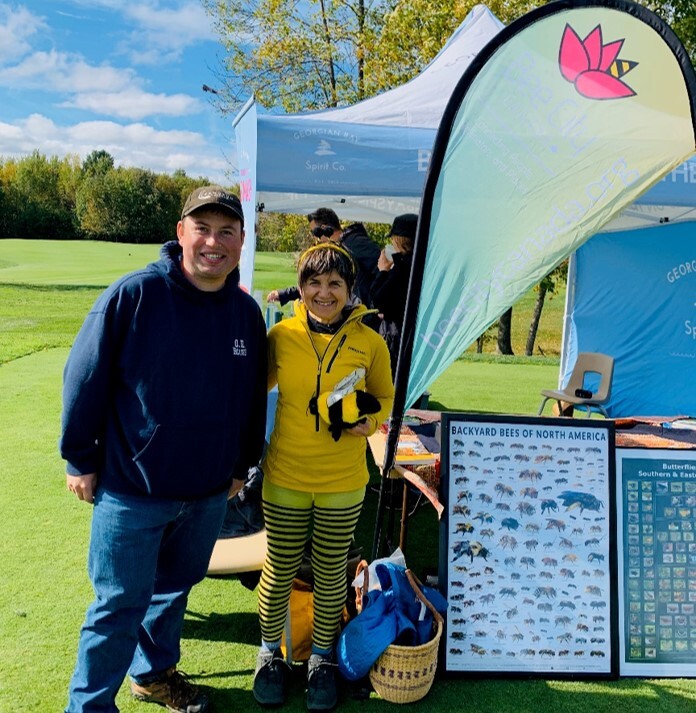
Shelly Candel, Bee City Canada
2020 NAPPC POLLINATOR ADVOCATE CANADA
Shelly Candel, inspired by Bee City (USA), started Bee City Canada in 2016. Under her leadership, the organization has grown extensively in 4 years, inspiring cities, First Nation communities, schools, college/university campuses, and businesses to take action to protect pollinators. Bee City Canada has 3 main programs that recognize communities and organizations that are taking steps or are committed to future initiatives to help pollinators: Bee Cities, Bee Campuses, and Bee Schools. In each program, applicants must commit to helping pollinators through habitat creation and restoration, pesticide reduction, and community outreach and education. At a local level, these communities are challenged to make change for pollinators and empowered with the knowledge they need, inspiring others across the nation to follow their lead. Under Candel’s leadership since 2016, there are now 42 Bee Cities, 12 Bee Campuses, 41 Bee Schools, and 18 Bee Business Partners.
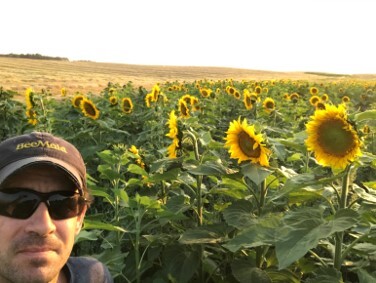
Ian Steppler, Steppler Farms Ltd
2020 NAPPC FARMER-RANCHER CANADA
Ian Steppler is the president of Steppler Farms Ltd, a farming enterprise that manages over 3,500 acres of arable land as well as a few thousand acres of pasture near Miami, Manitoba. Steppler Farms breeds and sells purebred Charolais cattle and operates a commercial honey bee operation of approximately 1,200-1,500 hives. Ian’s land management philosophy focuses on protecting flowering plants and grasses in order to provide year round nectar and pollen resources. Pastures are seeded with a grass seed and pollinator mix, including white and yellow sweet clover. Grazing rotations allow the flowering plants to bloom again, extending the overall flowering period. Ian always considers pollinators in his pest management decisions, and is passionate about not spraying ditches to the point that he works with his local municipality to mow 15 miles of ditches in his area. He is the vice-president of the Manitoba Beekeepers Association, a director of the Deerwood Watershed Authority, and leads the committee to establish the Knowledge and Research Transfer Program for the beekeeping industry in Manitoba. Ian also regularly shares his farming and beekeeping philosophy with others through his YouTube channel with 50,000 subscribers. In 2019, he spoke at 12 conferences outside the province and was the keynote speaker for the Manitoba Watershed Conservation Association’s annual conference.
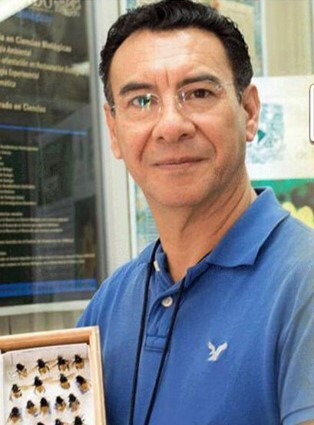
Dr. Ricardo Ayala Barajas, Instituto de Biología, Universidad Nacional Autónoma de Mexico
2020 NAPPC POLLINATOR ADVOCATE MEXICO
Dr. Ricardo Ayala Barajas is a researcher at the Instituto de Biología, Universidad Nacional Autónoma de Mexico at the Biology Station in Chamela. He is also Titular Researcher A of the National Research System Level 1. Dr. Ayala has dedicated more than 3 decades to research, teaching, and the dissemination of pollinator knowledge, specifically on the native bees of Mexico. He has more than 80 articles in indexed magazines, 6 books, and 26 book chapters about native bees and their importance. Significantly, Dr. Ayala has contributed to the knowledge of a large number of bee species and their importance, not only in Mexico, but in other countries as well.
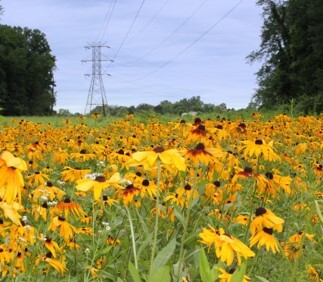
American Electric Power (AEP)
2020 NAPPC - EPRI POLLINATOR ELECTRIC POWER
American Electric Power (AEP) Prairie Research Project, conducted in collaboration with The Dawes Arboretum in Newark, Ohio, demonstrates the feasibility of economically incorporating native plants and pollinator
habitat into utility right-of-way (ROW) sites through prairie establishment. AEP is now developing guidance on the best management practices to successfully establish and maintain prairie habitat within ROWs based
on long-term monitoring of 3 acres of pollinator habitat under AEP transmission lines. AEP has developed a native prairie seed mix consisting of 25 regionally native species and an annual cover crop for revegetation use
after construction activities and is evaluating the influence of mowing on pollinator-plant community establishment. The habitat plots have documented visits from 33 butterfly species, 16 beneficial
insect families, 14 bee taxa, and 48 bird species, demonstrating their ecological value. AEP has
conducted site visits to educate its employees on the value of pollinator vegetation, created a publicly
available video to illustrate the benefits of native vegetation, and has hosted multiple Pollinator Week
events. They have also engaged many arboretum volunteers and made the habitat sites available to the Ohio
Bee Team and professional workshops hosted by the Ohio Chapter of the Wildlife Society.
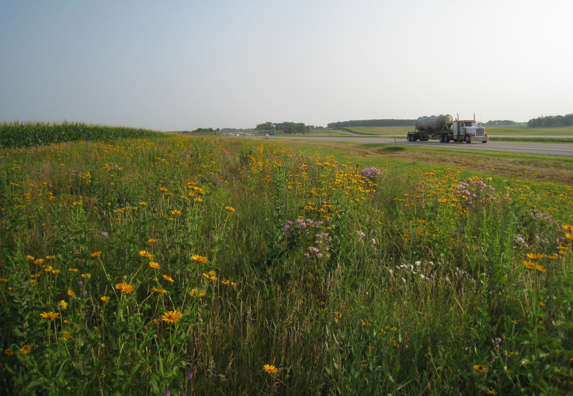
The Minnesota Department of Transportation
2020 NAPPC ROADSIDE MANAGERS
The Minnesota Department of Transportation (MnDOT) has demonstrated their commitment to environmental stewardship and pollinator habitat through reduced mowing practices, limited pesticide use, and uses 23 native seed mixes in roadside vegetation management, including 3 milkweed species. The agency currently uses native seed in 57% of management plans, with the target 75% of plans by 2025. Additionally, MnDOT utilizes prescribed fire to enhance native habitat and plant diversity while controlling invasive species, and the
agency supports research projects related to pollinator health. MnDOT also helped lead the development of the Monarch Butterfly Candidate Conservation Agreement with Assurances – the first nationwide voluntary agreement with USFWS to support monarch conservation on energy and transportation lands. Minnesota is one of the first states to enroll in the agreement, committing to long-term management for monarch butterflies on more than 20,000 acres along more than 11,000 miles of highway. MnDOT regularly engages the public through educational social media outreach, participation in National Pollinator Week, and the creation of monarch waystations along I-35 rest areas.

